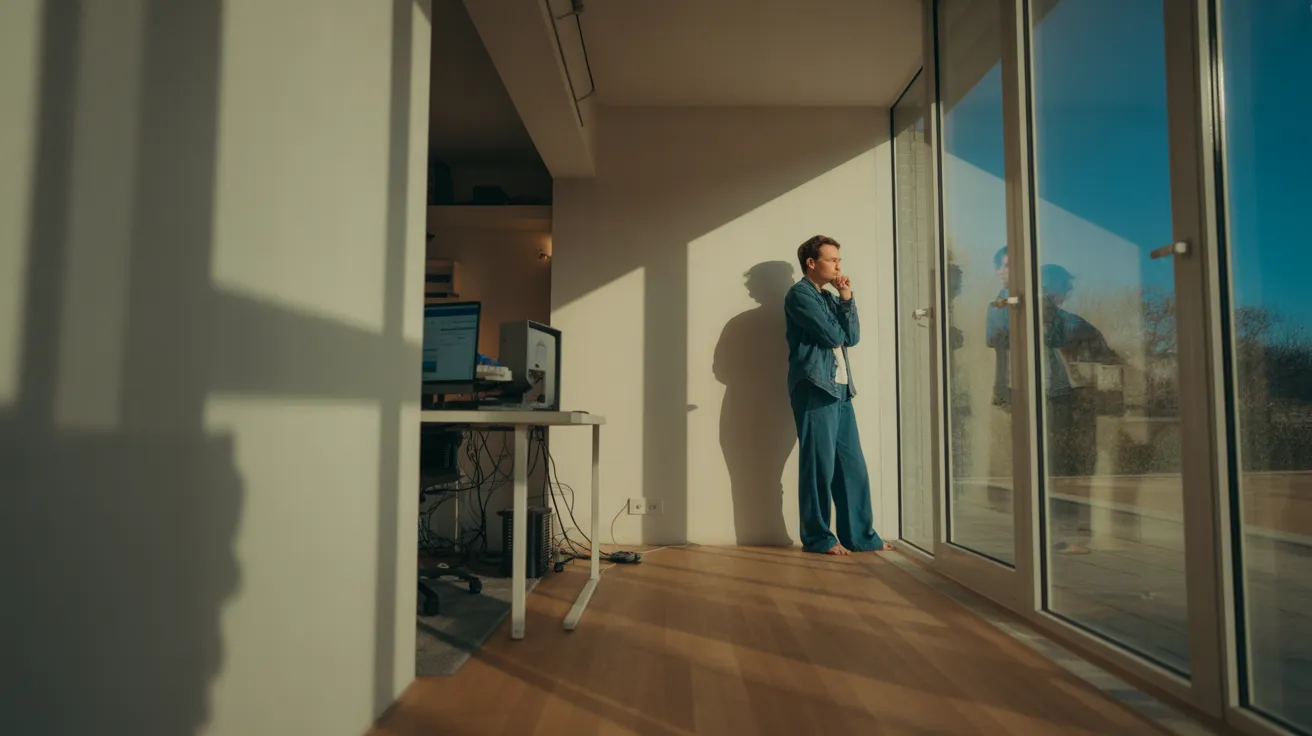
You’ve decided this is the time. The time to start meditating, to write that novel, to exercise consistently, to finally build a new routine that sticks. You buy the new running shoes, the fancy journal, the subscription to the mindfulness app. For three days, you are a beacon of discipline. And then, day four arrives. A stressful day at work, an unexpected errand, a simple feeling of exhaustion, and the new habit is the first thing to go. By the next week, it feels like a distant memory, another failed attempt filed away with the rest.
If this sounds familiar, you are not alone. The common advice is to “just be more disciplined” or to “tap into your willpower.” But for most of us, especially those navigating the delightful chaos of modern urban life, willpower is a finite and fickle resource. We are bombarded with thousands of decisions, notifications, and environmental triggers every single day. Each one chips away at our resolve. Relying on raw willpower to build a new habit in this environment is like trying to build a sandcastle during high tide. It’s a constant, exhausting battle against forces far more powerful than our momentary grit.
The problem isn’t your lack of motivation. The problem is the approach. True, durable habit building isn’t about grand, heroic acts of self-control. It’s about quiet, intelligent design. It’s about understanding the mechanics of your own mind and environment, and then using that knowledge to make good choices almost effortless. It’s about starting so small that it feels silly not to do it.
This guide isn’t about finding a magical burst of motivation that will last for months. That kind of motivation doesn’t exist. Instead, we’re going to give you a framework for building habits that don’t depend on feeling motivated. We will explore how to use tiny, consistent steps to create momentum that carries you forward, even on the days you feel tired, uninspired, and completely out of gas. Let’s get started on building a new routine that serves you, without leading to burnout.
📚 Table of Contents
- Understanding the Engine of Behavior: The Habit Loop and Your Identity
- Designing Your Habit for Success: The Four Pillars of Implementation
- Pillar 1: Choose Your Minimum Viable Action (MVA)
- Pillar 2: Conduct a Friction Audit
- Pillar 3: Design Your Environment with Cues
- Pillar 4: Enlist Gentle Accountability
- Safeguarding Your Progress: How to Handle Setbacks and Plateaus
- Reframe Relapse: A Missed Day is Data, Not a Defeat
- The Psychology of Streaks and the “Never Miss Twice” Rule
- Resetting Without Shame
- Putting It All Together: Two Worked Examples
- Frequently Asked Questions About Starting New Habits
- How long does it really take to form a new habit?
- What should I do when I travel or my routine is disrupted?
- I’m being consistent, but I feel like I’ve hit a plateau. What now?
- Is it a good idea to start multiple new habits at the same time?
- Your First Steps to Lasting Change
Understanding the Engine of Behavior: The Habit Loop and Your Identity
Before we can design a new habit, we need to understand how habits work under the hood. It’s not magic; it’s neurology. Every single one of your habits—good, bad, and neutral—operates on a simple, predictable pattern. Understanding this pattern is the first step to gaining control over it.
The Three-Part Habit Loop
Researchers at MIT and authors like Charles Duhigg have popularized a concept known as the habit loop. Think of it as a three-step neurological circuit that your brain runs on autopilot. The more you run this circuit, the more ingrained and automatic the behavior becomes. The three parts are the Cue, the Action, and the Reward.
1. The Cue: This is the trigger. It’s the signal that tells your brain which automatic routine to use. Cues can be almost anything. The most common types are a specific time of day (7:00 AM), a location (your kitchen), a preceding event (finishing dinner), an emotional state (feeling stressed), or the presence of other people (seeing a coworker head for coffee).
2. The Action (or Routine): This is the habit itself—the physical or mental action you take. It’s the behavior you want to change or build. This could be checking your phone, lacing up your running shoes, or opening a book.
3. The Reward: This is the payoff. The reward is what satisfies the craving your brain was seeking and tells your brain, “Hey, this loop is worth remembering for the future!” A reward can be a physical sensation (the rush from a good workout), an emotional payoff (a feeling of calm after meditating), or the satisfaction of a mental craving (the distraction found on social media).
Let’s look at a common, often unconscious, habit: checking your phone when you feel bored. The cue is the feeling of boredom or a lull in activity. The action is pulling out your phone and opening an app. The reward is a hit of novelty and distraction, which temporarily alleviates the boredom. Because this loop is rewarding, the next time you feel bored, your brain will automatically urge you to repeat the action. This is the core of all habit building, and we can use this exact structure to install positive new habits.
Beyond Goals: The Power of Identity-Based Habits
Now that we understand the mechanical “how” of a habit, let’s talk about the psychological “why.” Many of us start a new routine with a goal in mind: “I want to lose 15 pounds,” or “I want to write a 50,000-word novel.” These are outcome-based goals. They are focused on what you want to achieve. While goals are great for setting a direction, they can be surprisingly poor motivators for daily action.
A more powerful approach is to focus on identity-based habits. This concept, popularized by James Clear, shifts the focus from what you want to achieve to who you wish to become. Instead of saying, “I want to run a marathon” (an outcome), you focus on “I am a runner” (an identity). Instead of “I want to meditate every day” (an outcome), you focus on “I am a calm and mindful person” (an identity).
This may seem like a subtle semantic shift, but it’s psychologically profound. When your behavior is at odds with your identity, it’s a constant struggle. But when your actions align with the type of person you believe yourself to be, behavior change becomes a natural expression of who you are. Every time you perform your new habit, you are casting a vote for that new identity. Every time you lace up your shoes and go for a walk, you are reinforcing the identity of “an active person.” Every time you write one paragraph, you are reinforcing the identity of “a writer.”
Your goal is not just to perform an action; it’s to become the kind of person who performs that action. This provides a deep, intrinsic source of motivation for new habits that far outlasts the fleeting excitement of a new goal. Before you design your habit, ask yourself: Who is the person I want to become? What would that person do each day? Let the answer to that question guide the habits you choose to build.

Designing Your Habit for Success: The Four Pillars of Implementation
Knowing the theory is one thing; putting it into practice is another. The biggest mistake people make when starting a new routine is relying on motivation to show up. Instead, we must become architects of our behavior. This means designing a system that makes our desired habit the easiest and most obvious choice. This design process rests on four key pillars: starting small, reducing friction, designing your environment, and building in accountability.
Pillar 1: Choose Your Minimum Viable Action (MVA)
Our ambition is often our own worst enemy. We decide to get fit and commit to one-hour workouts, five days a week. We decide to read more and aim for a chapter a day. These goals are admirable, but they have a high activation energy. On a day when you are tired or pressed for time, they seem impossible, so you do nothing.
The solution is to define a minimum viable action. This is the smallest, most laughably easy version of your habit that you can perform in under two minutes. It’s the “atomic unit” of your desired behavior. The goal of the MVA is not to get results on day one; it’s to master the art of showing up. It’s about building the neural pathway for the action itself.
Examples of Minimum Viable Actions:
- Instead of “go for a 30-minute run,” your MVA is “put on my running shoes and step outside.”
- Instead of “meditate for 20 minutes,” your MVA is “sit on my cushion and take three deep breaths.”
- Instead of “write 500 words,” your MVA is “open my document and write one sentence.”
- Instead of “clean the entire kitchen,” your MVA is “clear and wipe one countertop.”
The beauty of the MVA is that it short-circuits procrastination. It’s so easy that you can’t say no. And very often, once you’ve put on your running shoes and stepped outside, you might just feel like going for a short walk or jog. Once you’ve written one sentence, you might write another. The MVA is a gateway that builds momentum. Consistency is far more important than intensity when you’re starting out.
Pillar 2: Conduct a Friction Audit
Every action you take has a certain amount of friction associated with it. Friction is anything that makes a behavior more difficult. It’s the number of steps, the amount of time, or the mental effort required to complete the task. To build good habits, we must decrease friction. To break bad habits, we must increase it.
Think of yourself as a river. You will always follow the path of least resistance. A friction audit involves intentionally carving a smoother path for your desired habits. Ask yourself: “What are all the steps that stand between me and doing my habit?” Then, eliminate as many as possible.
Decreasing Friction for Good Habits:
- Want to exercise in the morning? Lay out your workout clothes, shoes, and water bottle the night before.
- Want to read more? Leave a book on your pillow or on the coffee table instead of the remote control.
- Want to eat healthier? Pre-chop vegetables for the week on Sunday.
Increasing Friction for Bad Habits:
- Want to watch less TV? Unplug it after each use and store the remote in another room.
- Want to mindlessly scroll on your phone? Delete the apps, or log out after each session, forcing you to re-enter your password.
- Want to eat fewer sweets? Store them in an opaque container on a high shelf, not in a clear jar on the counter.
By a few minutes of preparation, you can dramatically increase the odds that you’ll follow through. Make your good habits easy and your bad habits hard.
Pillar 3: Design Your Environment with Cues
Your environment is the invisible hand that shapes your behavior. The most disciplined people are often not those with superhuman willpower, but those who have designed their environment to make their desired actions automatic. We need to make our cues visible and obvious.
This ties directly back to the habit loop. If you want to start a new routine, you need a reliable cue to trigger it. Don’t leave it to chance. A great way to do this is a technique called habit stacking. This means pairing your new desired habit with an existing, established habit that you already do every day without fail.
The formula is simple: “After [CURRENT HABIT], I will [NEW HABIT].”
- “After I pour my morning cup of coffee, I will sit down and meditate for one minute.”
- “After I brush my teeth at night, I will read one page of a book.”
- “After I take off my work shoes, I will immediately change into my workout clothes.”
Your current habit acts as a powerful, reliable cue for the new one. You can also use your physical space. If you want to practice guitar, don’t keep it in its case in the closet. Put it on a stand in the middle of your living room. The visual cue of seeing the guitar will constantly remind you of your intention. Design your home, your desk, and your digital spaces to be a landscape of positive triggers.
Pillar 4: Enlist Gentle Accountability
We are social creatures. The simple act of knowing someone else is aware of our commitment can be a powerful motivator. This doesn’t need to be a strict drill sergeant; in fact, gentle support is often more effective for long-term habit building.
Find an accountability partner. This could be a friend, family member, or colleague who is also working on a new habit. Agree to send a simple text to each other each day after you’ve completed your action. For example, a simple “Done!” or a checkmark emoji. This isn’t about judgment or shame if you miss a day. It’s about creating a shared sense of progress and celebration. The knowledge that someone is expecting your text can be just the nudge you need to get your MVA done on a low-motivation day.
If you prefer a non-human method, a habit tracker can serve a similar purpose. A simple calendar where you draw an “X” on each day you complete your habit can be incredibly satisfying. The goal is to make your progress visible and create a system that holds you to your own intention.
![]()
Safeguarding Your Progress: How to Handle Setbacks and Plateaus
Even with the most perfectly designed system, life happens. You will have days where you miss your habit. You will have weeks where your progress feels stalled. This is not a failure; it is a normal and expected part of the process. The key to building durable habits is not perfection, but resilience. It’s about how you respond to these inevitable challenges.
Reframe Relapse: A Missed Day is Data, Not a Defeat
The all-or-nothing mindset is the death of most new habits. We do well for eight days, miss the ninth, and conclude, “I’ve failed. I might as well give up.” This is a destructive and inaccurate way to view the process. A missed day is not a moral failing or a sign that you’re “just not a disciplined person.”
Instead, treat a missed day as a data point. Get curious, not critical. Ask yourself: What happened that caused me to miss my habit? Was the friction too high? Did my cue fail? Was I unexpectedly busy or exhausted? Use the answer to refine your system. Maybe your MVA is still too ambitious. Maybe you need to lay your clothes out even earlier. Maybe you need a backup time to do your habit if your morning is disrupted.
The goal is progress, not perfection. One day of data collection does not erase the eight days of progress you already made. The neural pathways you built are still there. The identity you’re forming is still taking shape. The most important habit you can build is the habit of getting back on track.
The Psychology of Streaks and the “Never Miss Twice” Rule
For some people, tracking a streak can be highly motivating. Seeing a chain of “X”s on a calendar and not wanting to “break the chain” can provide a powerful incentive to show up. This visual feedback reinforces your commitment and makes your progress tangible. If this works for you, embrace it.
However, the danger of streaks is that when you inevitably do miss a day, the sense of loss can be so demotivating that it causes you to quit altogether. To counteract this, adopt a more forgiving and effective rule: never miss twice.
Life will get in the way. A sick child, a travel day, a crushing deadline—these things will happen. One missed day is an accident. Two missed days is the beginning of a new, undesirable habit. The “never miss twice” rule provides a compassionate-but-firm framework for getting back on track immediately. It acknowledges that perfection is impossible but emphasizes that consistency is crucial. If you miss your morning workout on Tuesday, make it an absolute priority to at least complete your minimum viable action on Wednesday. This approach prevents a single slip-up from spiraling into giving up completely.
Resetting Without Shame
There may be times when a longer break is unavoidable, such as a vacation or an illness. When you return, the momentum you built might feel gone. The temptation is to feel ashamed and avoid restarting because it feels like you’re back at square one. This is just another trick of the all-or-nothing mindset.
When you need to restart, do it with compassion and strategy. Don’t try to jump back in at the level you were before the break. Go back to your minimum viable action. The goal is simply to re-establish the routine. If you were running for 20 minutes, go back to just putting on your shoes and walking for two. If you were writing 500 words, go back to writing one sentence.
Resetting is a normal part of the process. Acknowledge that you took a break, and then calmly and deliberately take the first, smallest step to get back into the rhythm. Shame is a useless emotion in habit building. It drains your energy and makes it harder to start again. Replace it with curiosity and the simple intention to take the next right action, no matter how small.

Putting It All Together: Two Worked Examples
Let’s move from theory to reality. Here is how you might apply these principles to design two common routines: a calming evening wind-down and a focused morning primer. Notice how each element—identity, cue, MVA, and friction reduction—comes into play.
Example 1: The Evening Wind-Down Routine
Identity: “I am a calm and well-rested person who values sleep.” This identity shifts the focus from a list of chores to a state of being.
The Goal: To stop mindlessly scrolling on my phone in bed and instead read a book to calm my mind before sleep.
The Design Process:
First, I need a reliable cue. I’ll use time-based and environment-based cues. I will set a recurring alarm on my phone for 10:00 PM labeled “Time to Wind Down.” That’s my signal to start the process. The second cue is my environment. I will make my bedroom a “no-scroll zone.”
Next, I’ll tackle friction. To decrease the friction for my desired habit, I will place a book I’m excited to read on my pillow every morning when I make my bed. It will be physically waiting for me. To increase the friction for my bad habit, I will move my phone charger to the kitchen. This makes it impossible to plug it in next to my bed and scroll. I have to physically get up and leave the room to use it while it’s charging.
My Minimum Viable Action (MVA) will be: “After the 10:00 PM alarm goes off, I will plug my phone in the kitchen and read just one page of the book on my pillow.” This is so simple it feels foolproof. Most nights, I know I’ll read more than one page, but on a tiring day, just doing that one page still counts as a win. It reinforces the habit loop.
Finally, for accountability, I’ve told my partner about my goal. They can gently ask, “Did you get to your reading tonight?” This simple check-in adds a layer of supportive encouragement. The reward is twofold: the immediate enjoyment of the book and the long-term, powerful reward of better sleep and feeling more rested, which reinforces my identity as a well-rested person.
Example 2: The Morning Focus Primer
Identity: “I am a focused and proactive person who starts the day with intention.”
The Goal: To stop reacting to emails and news first thing in the morning and instead spend five minutes planning my day to feel more in control.
The Design Process:
I will use habit stacking for my cue. My existing, automatic habit is making coffee. So my new cue will be: “After I press the ‘start’ button on my coffee maker.”
For my friction audit, I need to make the new habit effortless and the old one harder. To decrease friction, I will leave a specific notepad and a pen on the kitchen counter next to the coffee maker the night before. It will be waiting for me, open to a fresh page. To increase friction for the old habit, I will use my phone’s settings to disable notifications for email and news apps from 10 PM to 9 AM. I will also move these apps off my home screen and into a folder on the last page. I can still access them, but it requires more intentional effort.
My Minimum Viable Action (MVA) is: “After starting my coffee, I will write down my single most important task for the day.” That’s it. Just one thing. It takes less than 30 seconds. On most days, this will naturally lead me to jot down a few other to-dos, but even if I only write that one thing, I have successfully primed my brain for a proactive day.
The reward is the immediate feeling of clarity and control over my day. I’m no longer starting my morning in a state of reaction, hijacked by other people’s agendas. This feeling directly reinforces my desired identity as a focused and intentional person, making me eager to repeat the action the next day.

Frequently Asked Questions About Starting New Habits
As you begin this journey, questions and obstacles will naturally arise. Here are answers to some of the most common queries we receive about habit building. Remember, the process is a marathon, not a sprint.
How long does it really take to form a new habit?
You may have heard the popular myth that it takes 21 days to form a habit. While a nice, tidy number, it’s an oversimplification. The reality, according to research published in the European Journal of Social Psychology, is that it can take anywhere from 18 to 254 days for a behavior to become automatic. The average was found to be 66 days. The time it takes depends heavily on the complexity of the habit, the environment, and the individual. A simple habit like drinking a glass of water after you wake up might become automatic in a few weeks. A more complex habit like a daily 45-minute workout will likely take much longer. The key takeaway is to stop focusing on the destination (“when will it be automatic?”) and focus on the process. Commit to showing up each day, and let automaticity be a pleasant side effect when it arrives.
What should I do when I travel or my routine is disrupted?
Disruptions are a primary reason why habits fail. The key is to plan for them. Before you travel or enter a period of disruption, create a “disruption plan.” This plan should focus on maintaining your Minimum Viable Action. Your environment and cues will be different, so you can’t rely on your normal system. For example, if your habit is a morning workout at your usual gym, your travel MVA might be “do five minutes of bodyweight exercises (squats, push-ups) in my hotel room before showering.” If your habit is journaling at your kitchen table, your travel MVA could be “write one sentence in a notes app on my phone.” The goal isn’t to achieve the same results as you would at home; the goal is to keep the streak of your identity alive. You are still casting a vote for being “an active person” or “a writer,” even in a different context.
I’m being consistent, but I feel like I’ve hit a plateau. What now?
Plateaus are a natural and often necessary part of progress. Initially, the novelty of a new habit and the “newbie gains” are highly motivating. Over time, as the action becomes more routine, it can feel less exciting and your progress may seem to slow down. This is often the point where people quit, mistaking the plateau for failure. The first step is to simply acknowledge that this is normal. The second is to re-engage with your progress. Review your habit tracker and appreciate how far you’ve come. Third, consider introducing a small, novel variation to your routine. If you’ve been walking the same route, try a new one. If you’ve been meditating silently, try a guided meditation. If you’ve been reading non-fiction, try a novel. Finally, this is a good time to revisit your “why”—your identity. Remind yourself not just of what you’re doing, but who you are becoming through this process. This can provide the intrinsic motivation to push through the plateau.
Is it a good idea to start multiple new habits at the same time?
While it’s tempting to overhaul your life all at once, it’s generally a recipe for burnout. As we’ve discussed, even a small new habit requires mental energy and focus to establish. Trying to build several at once divides your attention and depletes your willpower reserves far too quickly. The recommended approach is to focus on one—and only one—new “keystone” habit at a time. A keystone habit is a foundational behavior that tends to create a positive ripple effect in other areas of your life. For many people, habits like daily exercise, meditation, or planning their day can be keystone habits. Once your chosen habit is firmly established and feels mostly automatic (after at least a month or two of consistency), you can then begin the design process for the next one. Slow, sequential progress is far more durable than a frantic, simultaneous overhaul.

Your First Steps to Lasting Change
You now have the complete toolkit for building a new habit without relying on the fleeting magic of motivation. You understand the mechanics of the habit loop, the power of an identity-based approach, and the four pillars of designing a behavior for success: starting with a Minimum Viable Action, reducing friction, designing your environment, and using gentle accountability. Most importantly, you have a compassionate framework for handling the inevitable setbacks and plateaus that are part of any meaningful journey.
Knowledge is a great starting point, but action is what creates change. The journey to a new routine doesn’t start with a giant leap; it starts with a single, deliberate step. Here are three concrete actions you can take over the next week to put this all into practice.
1. Choose One Habit and Define Your Identity (Next 24 Hours). Don’t try to change everything at once. Pick one single area you want to improve. It could be related to your health, your work, your creativity, or your relationships. Once you’ve chosen the habit, take five minutes to write down the identity associated with it. Don’t just write “I want to exercise.” Write “I am a strong and energetic person who moves my body every day.” This is your north star.
2. Design Your Minimum Viable Action and Environment (This Week). Based on the habit you chose, what is the absolute smallest version of it you can do? The version that takes less than two minutes and is impossible to say no to. Define it clearly. Then, perform a quick friction audit. How can you make that MVA ridiculously easy to do? Lay out your clothes, put the book on your pillow, place your journal next to your coffee maker. Set up your environment to be your greatest ally.
3. Commit to One Week of Consistency (Next 7 Days). Forget about the next year or even the next month. Your only goal is to perform your Minimum Viable Action every day for the next seven days. Track it on a calendar. Tell a friend. The goal isn’t to see massive results; it’s to prove to yourself that you can show up. It’s about casting those first seven votes for your new identity. After that week, you can do another, and then another. Momentum is built one small, consistent action at a time.
Building new habits is a skill, not an innate talent. It requires patience, strategy, and a great deal of self-compassion. Start small, design wisely, and be kind to yourself along the way. You have everything you need to begin.
Disclaimer: The information provided in this article is for informational purposes only and is not intended as a substitute for professional medical or psychological advice, diagnosis, or treatment. Always seek the advice of your physician or other qualified health provider with any questions you may have regarding a medical condition or mental health concern.
For expert guidance on productivity and focus, visit Getting Things Done (GTD), OSHA Ergonomics, National Institutes of Health (NIH) and National Sleep Foundation.






